Banking on Business in Booming Flatbush
You have to look past the busy storefronts and competing signage, but look up and around at the corner of Flatbush and Caton avenues and you will see an impressive array of buildings.

You have to look past the busy storefronts and competing signage, but look up and around at the corner of Flatbush and Caton avenues and you will see an impressive array of buildings. Businesses and institutions were making a claim in booming Flatbush in the late 19th and early 20th centuries and setting up shop on the commercial corridor of Flatbush Avenue.
They were doing so in a mix of styles. There’s the classically inspired bank at 815 Flatbush Avenue and a whirling web of Art Deco pattern directly across the street at 816-818 Flatbush Avenue. The Renaissance Revival-inspired 820 Flatbush Avenue offers a dose of yet another architectural style.
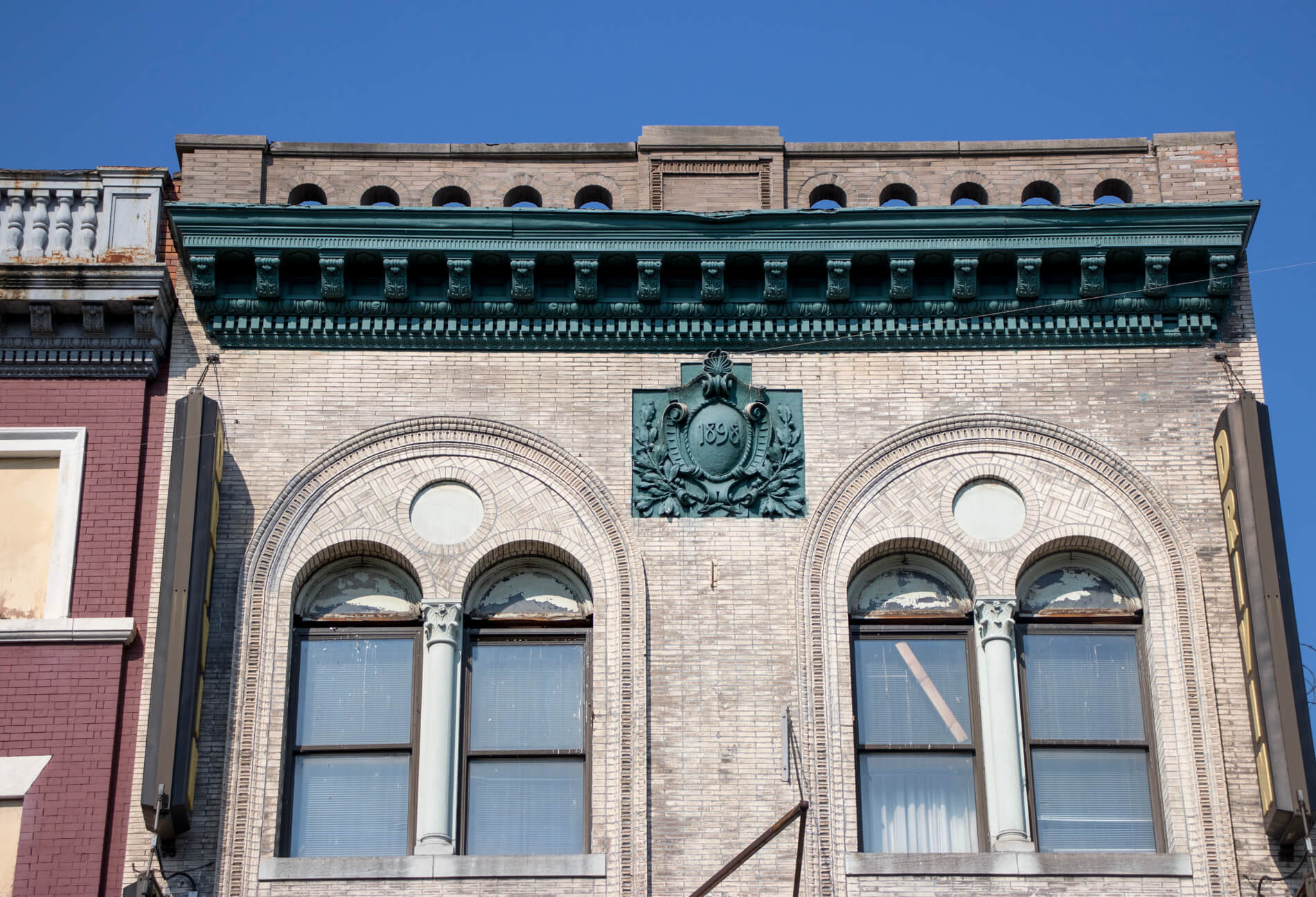
The bold cornice, arched windows and brickwork caught the eye of Brownstoner columnist Suzanne Spellen back in 2012. Thankfully, those fine details still survive.
Clearly coming before its modern Art Deco neighbor, the building itself provides a not so subtle hint at the construction date. Look up and you can spot an ornamental shield which bears the date 1898.
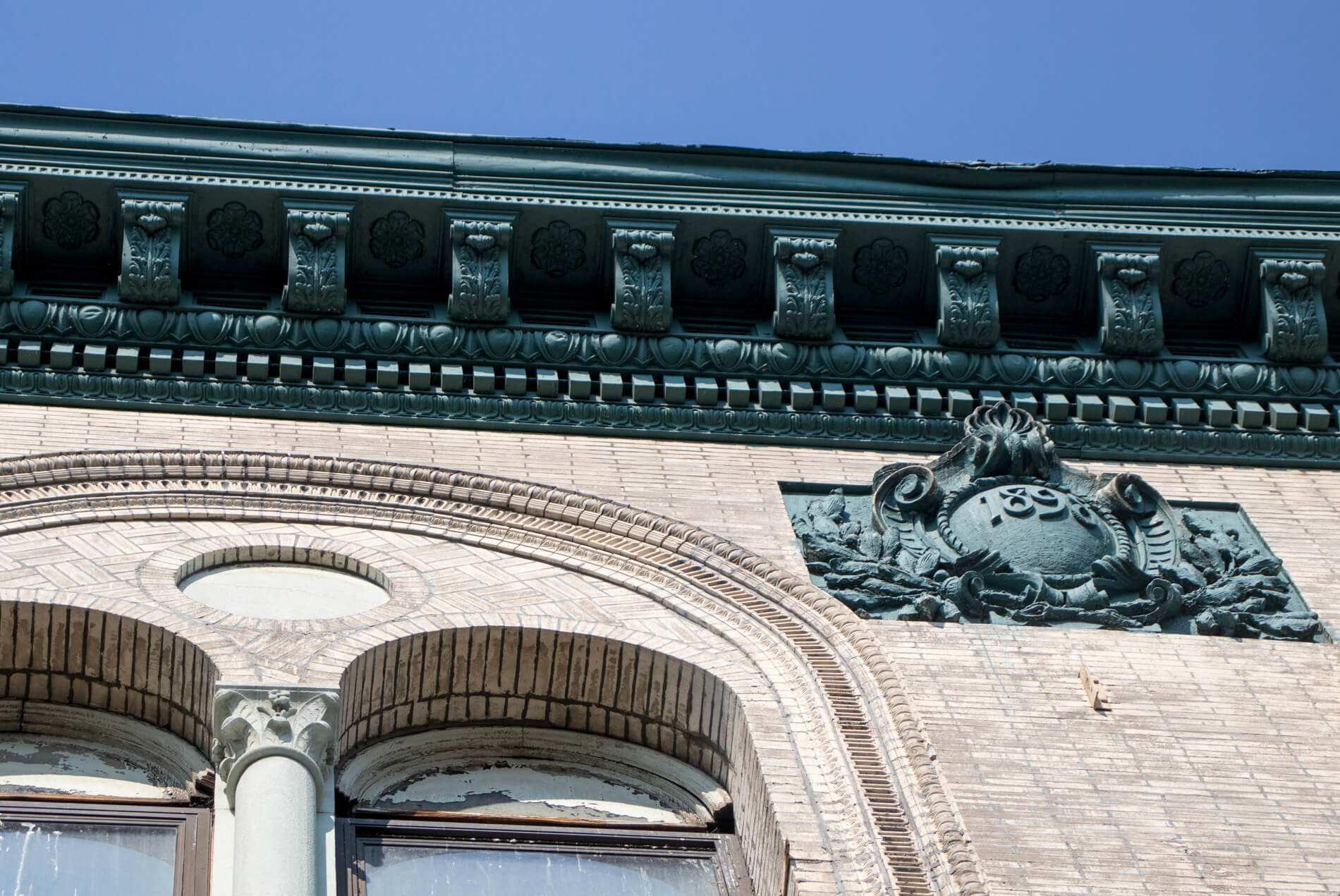
In April of that year the Brooklyn Daily Eagle announced ground had been broken for a new building on the lot to be constructed by Everett E. Terry. The construction timeline was ambitious, with plans for Kings County Lodge No. 511 to take up residence in part of the building by September 1.
The deadline appears to have been met; by November of 1898 the Flatbush masons were settled in their new space and a grand dedication ceremony was held. Building owner Everett E. Terry turns up in newspaper accounts as a mason and a member of Lodge No. 511, so perhaps it isn’t surprising that the group was able to move into their new space on time. The rooms were described in the Brooklyn Daily Eagle account as “finely appointed and richly furnished” with an estimated $1,200 spent on the decorating.
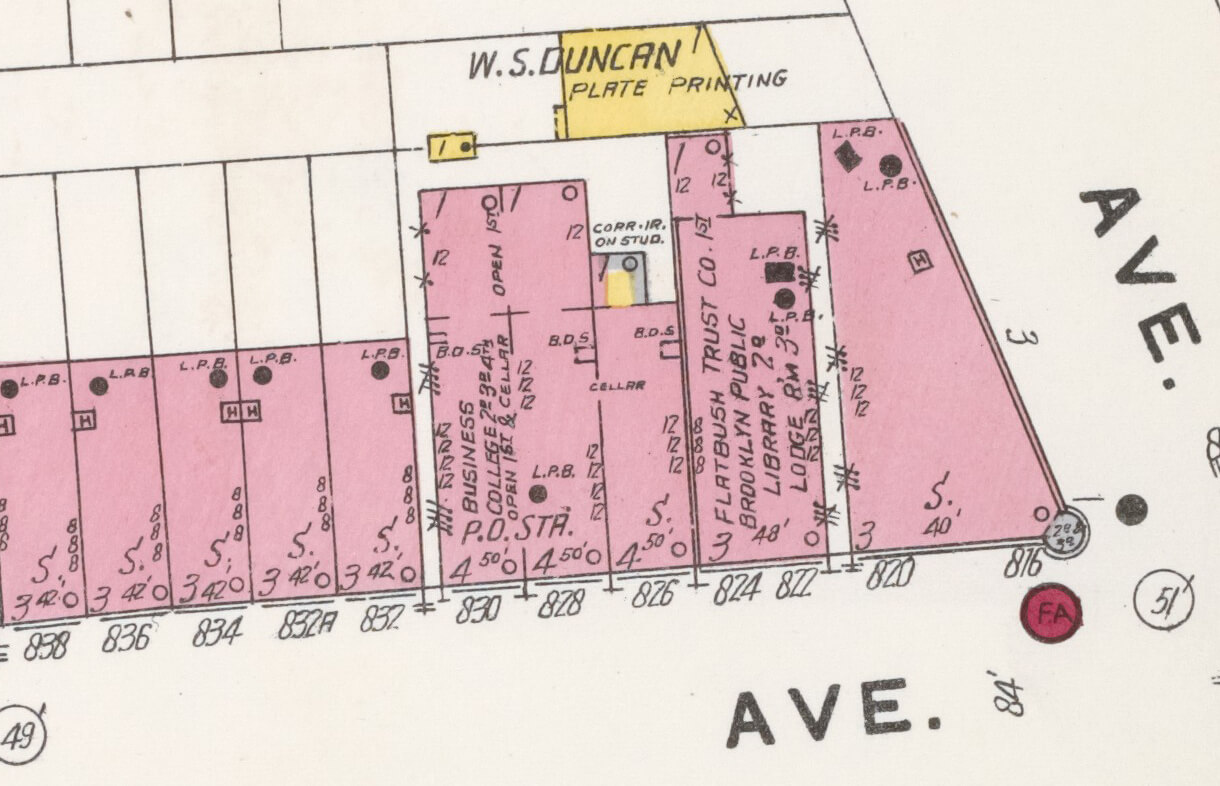
The building seems to have been built by Terry as a speculative office building and a map from 1905 provides other clues to the tenants he was able to attract. In addition to the lodge on the third floor the building housed the Brooklyn Public Library on the second floor and the Flatbush Trust Company in the ground floor space. On the map the building is also labelled not as 820 Flatbush Avenue as it is known today, but as 822 to 824 Flatbush Avenue. This tip and the increased availability of online resources helped in hunting down more information on the early construction and tenants.
The Flatbush Trust Company was founded in the spring of 1899 and by July was open for business in their new offices on the ground floor of Terry’s building. The founding trustees and officers of the organization includes names familiar to Brooklyn history buffs — Lott, Ditmas and Driggs to name just a few.
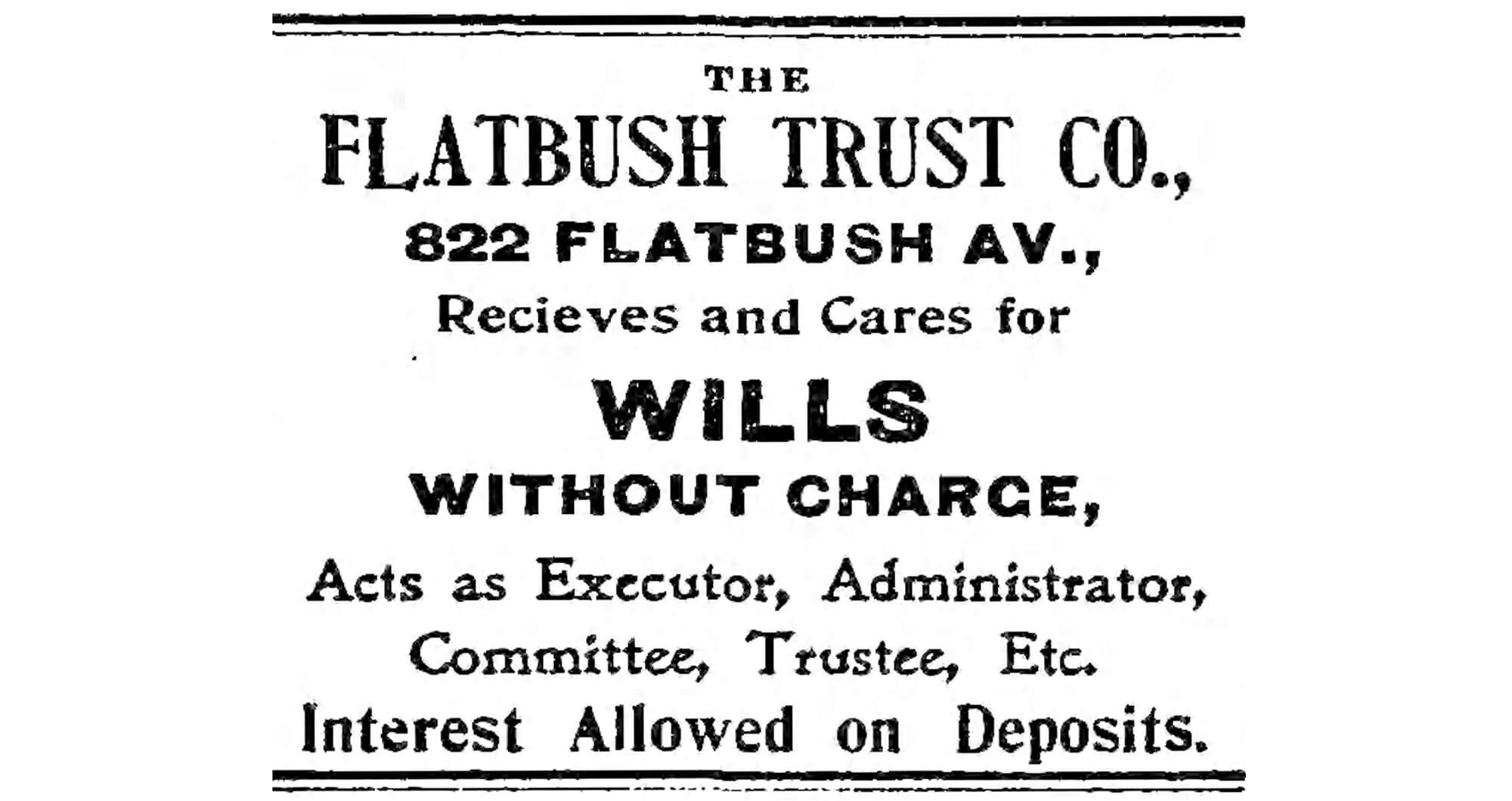
The new bank was a success, claiming to have grown from 35 accounts the month they opened to 646 accounts by July of 1900. They were also boosters of the history and development of Flatbush and in 1901 they published the book Flatbush, Past & Present by Edmund D. Fisher. Written in the style of the time the history facts should perhaps be taken with a grain of salt but the volume is a wonderful source for photographs of 19th century Flatbush and an understanding of how the rapid changes in the area were being viewed.
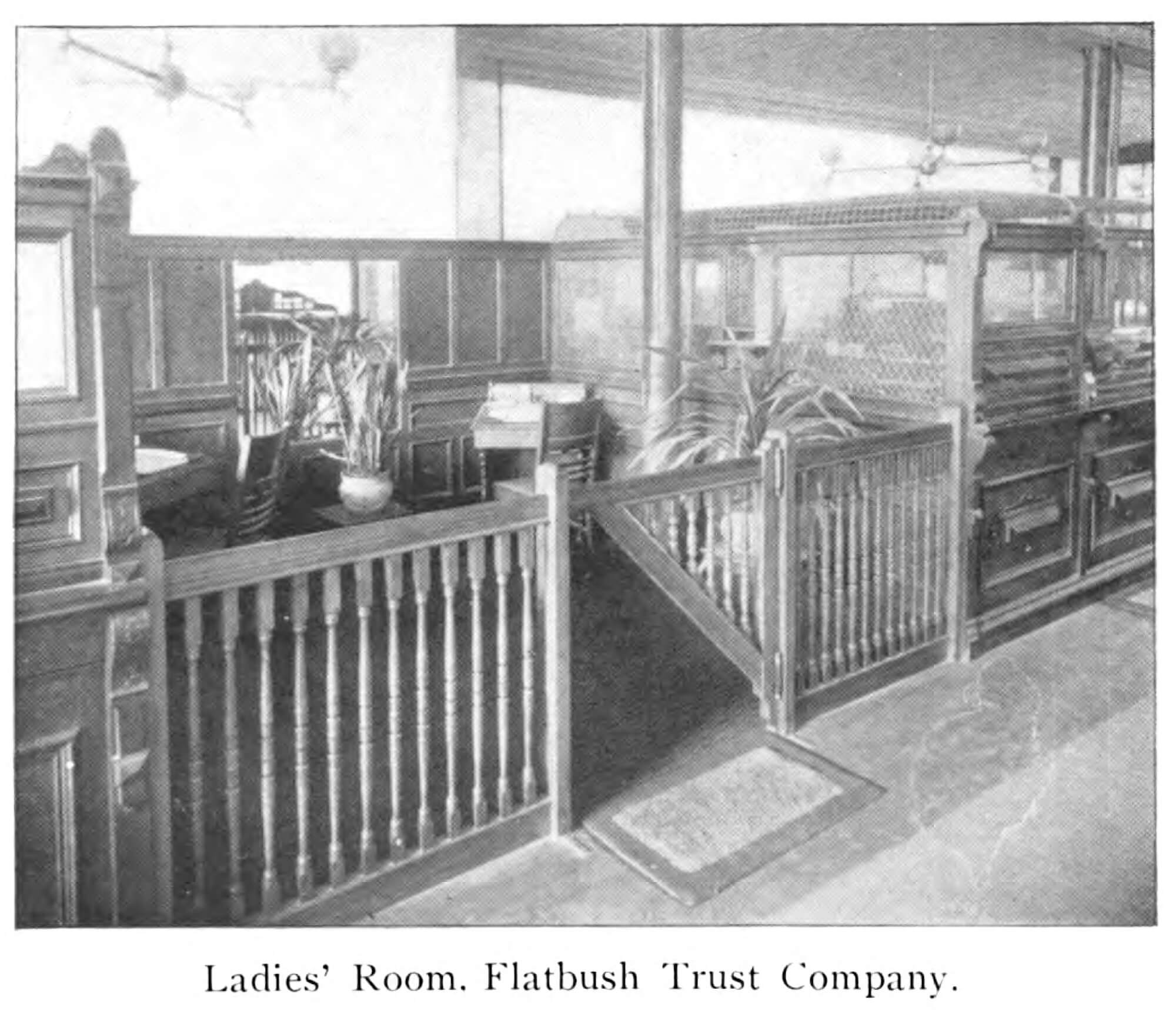
There is, of course, a section dedicated to banking, which handily has images of the interior of the Flatbush Trust Company Offices. The bank was headquartered at 820, aka 822-824, Flatbush Avenue during the time the book was published, so the photographs depict the first floor space of the building. The images show interiors rich with dark wood, presumably to lend an air of solid reliability.
The bank wouldn’t stay in these spaces for long, in 1902 they purchased the Martense house at Flatbush Avenue and Linden Boulevard land with plans to demolish the house and construct their own building.
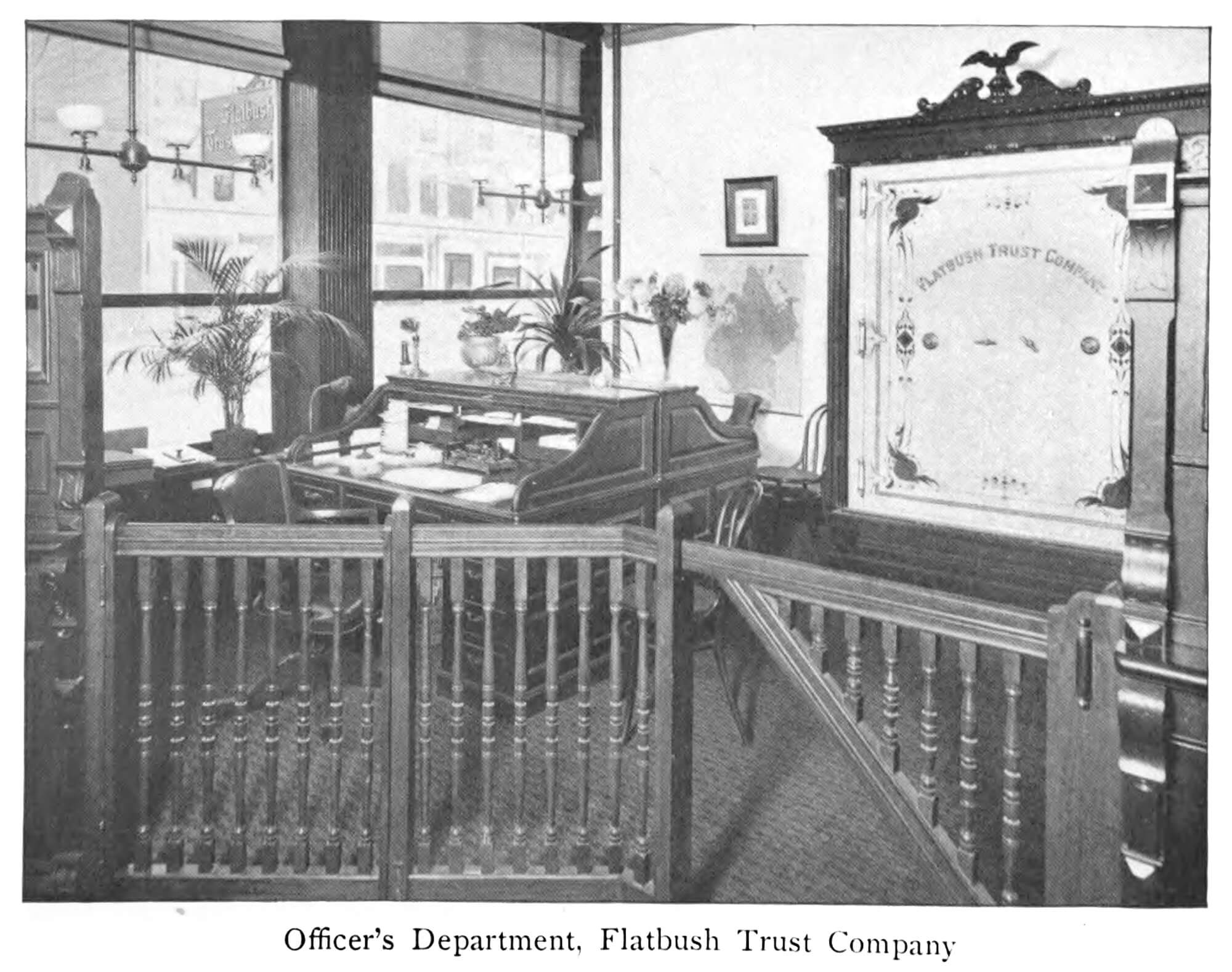
Their neighbors in 820 Flatbush Avenue were making similar plans. The Brooklyn Public Library first took a lease in the building in the fall of 1901. The second story space would cost them $50 per month according to a letters regarding the leasing of the property. The library’s lease was running out at their 7 Caton Avenue location so it was recommended to lease the space at what was referred to in the documentation as 824 Flatbush Avenue for roughly 30 months. The owner of the building was identified as Sarah B. Terry. Census records seem to indicate that Sarah was the mother of Everett E. Terry.
By 1905 both the Flatbush Trust Company and the library had moved out and into new buildings adjacent to each other on Flatbush Avenue near Linden Boulevard. Architect John J. Petit designed the Flatbush Trust Company new headquarters and Rudolph L. Daus designed the new Andrew Carnegie funded library.
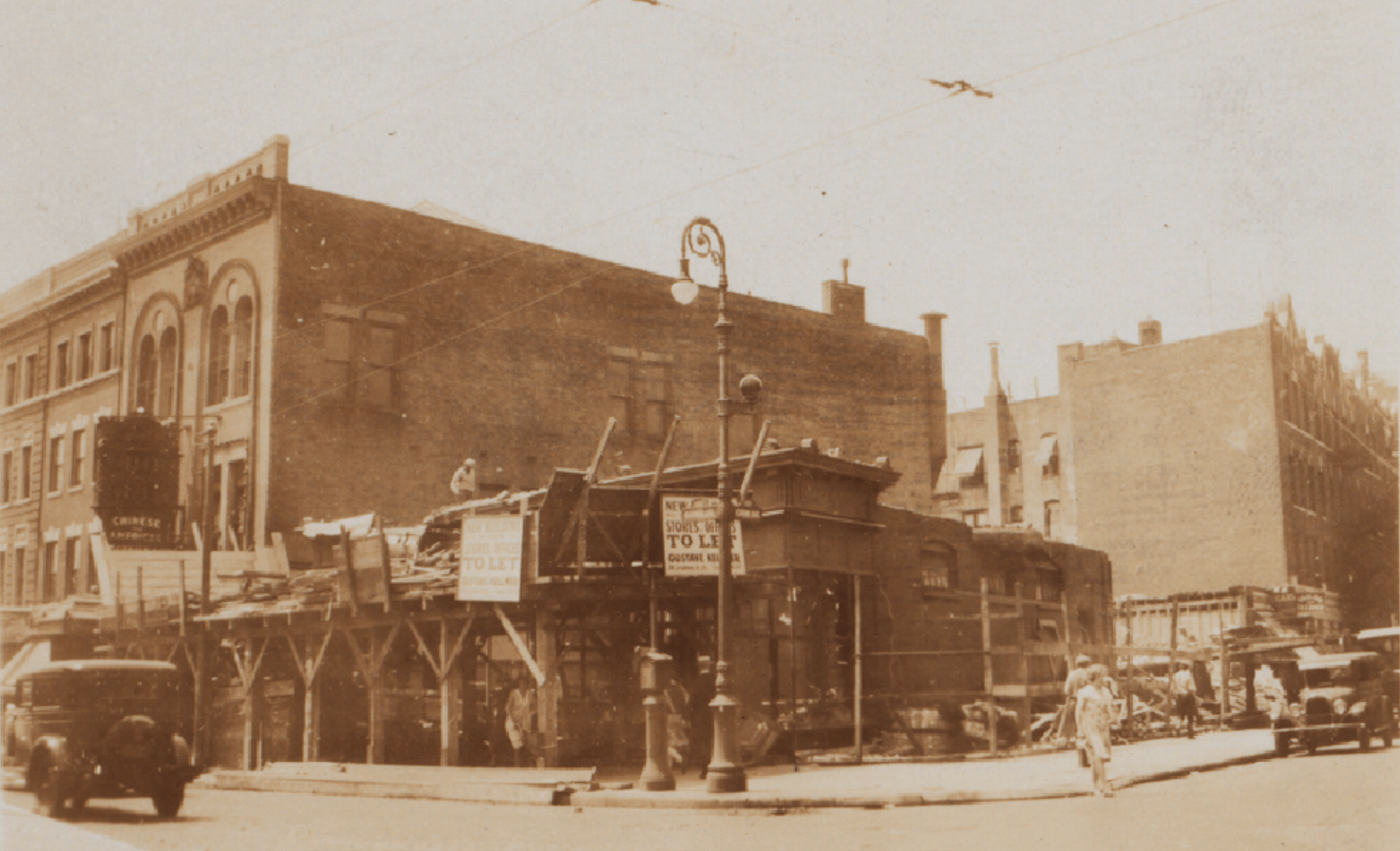
The third floor tenant at 820 Flatbush Avenue, Kings County Lodge Number 511, stayed in the building a bit longer but they too eventually built their own headquarters. The new Flatbush Masonic Temple was dedicated in the fall of 1919 on Bedford Avenue near Church Street.
Their former home doesn’t seem to have remained empty for long: Ads pop up in the Brooklyn Daily Eagle for various business in the building through the early 20th century. By the time of the circa 1940 tax photo, the ground floor was home to luncheonette and confectionery Carstens Confectionery and signage on the upper floor seems to indicate a dance studio.
More recent photos show the National Vision Center on the ground floor since at least 2007. Ownership hasn’t changed since the 1980s, so let’s hope this reminder of the history of Flatbush continues to grace its spot on the avenue with all its wonderful detail intact.
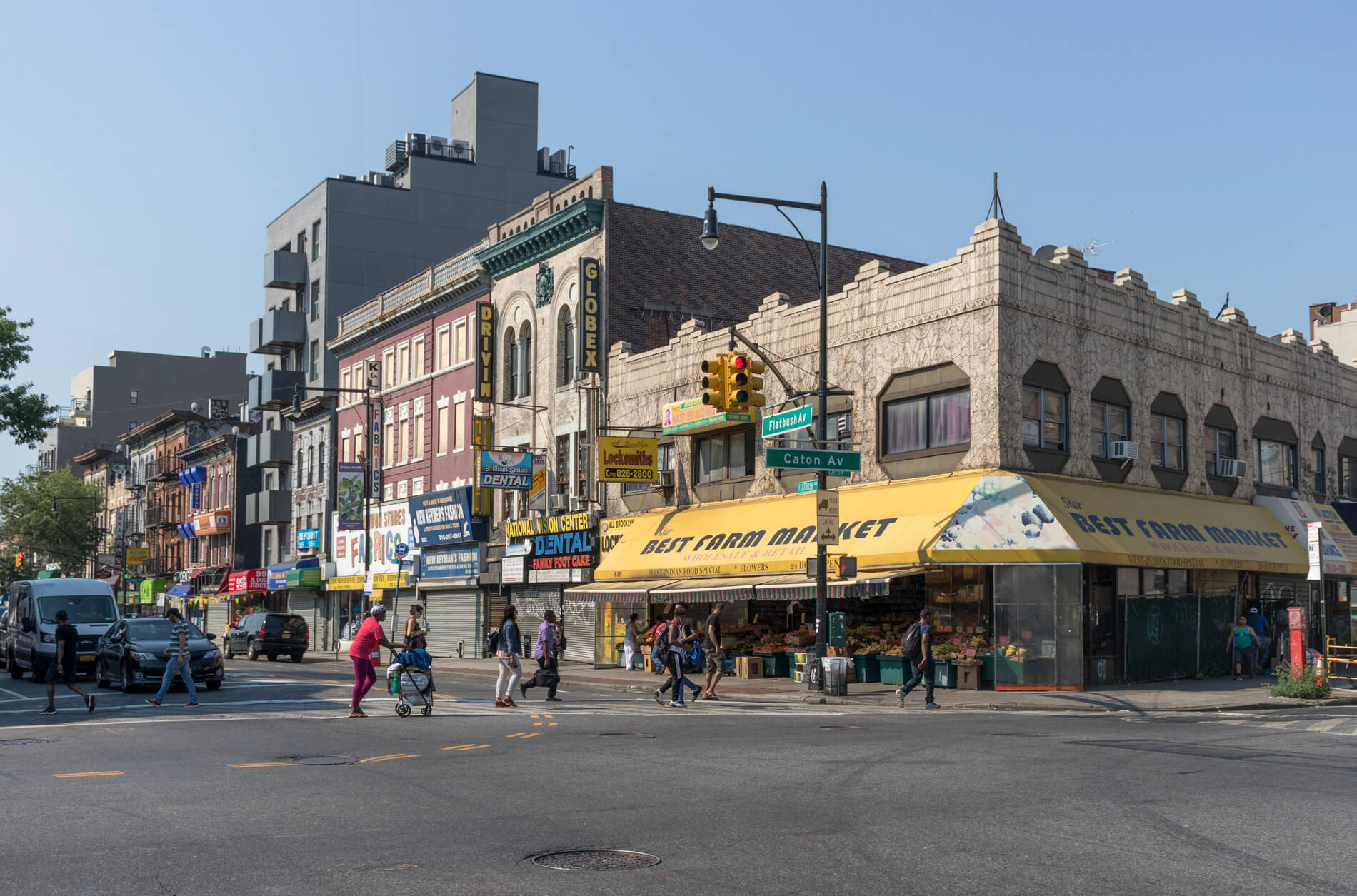
[Photos by Susan De Vries unless noted otherwise]
Related Stories
- A Whirling Web of Art Deco Pattern on Flatbush Avenue
- Robert Fulton Is Watching You From Flatbush Avenue
- Past and Present: The Intersection of Flatbush and Linden
Email tips@brownstoner.com with further comments, questions or tips. Follow Brownstoner on Twitter and Instagram, and like us on Facebook.





What's Your Take? Leave a Comment